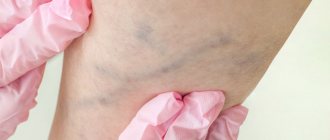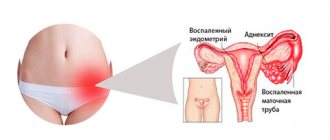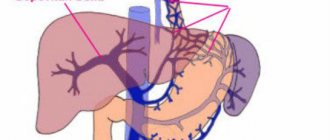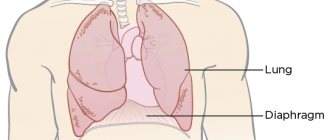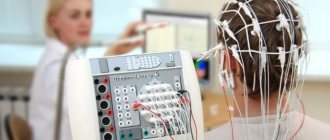Why does my nose bleed?
Nosebleeds have many causes. Fortunately, most of them are not serious.
The most common cause of nosebleeds is dry air. Dry air can be caused by hot climates with low humidity or hot indoor air. Both environments cause the nasal membrane (the delicate tissue inside the nose) to dry out, crust or crack, and increase the likelihood of bleeding when rubbing or blowing the nose.
Other common causes of nosebleeds include:
- nose picking;
- colds (upper respiratory tract infections) and sinusitis, especially episodes that cause repeated sneezing, coughing, and nose-blowing;
- severe nose blowing;
- trauma to the nose and/or face;
- allergic and non-allergic rhinitis (inflammation of the nasal mucosa);
- blood thinning drugs (aspirin, non-steroidal anti-inflammatory drugs, warfarin, etc.);
- chemical irritants (chemicals in cleaning products, chemical fumes in the workplace, other strong odors);
- great height. As altitude increases, the air becomes thinner (lack of oxygen) and drier;
- deviated septum (irregular shape of the wall separating the nose on both sides);
- Frequent use of nasal sprays and medications for an itchy, runny or stuffy nose. These medications—antihistamines and decongestants—can dry out the nasal membranes;
Other, less common causes of nosebleeds include:
- alcohol consumption;
- bleeding disorders such as hemophilia, von Willebrand disease or leukemia;
- high blood pressure;
- atherosclerosis;
- facial and nasal surgery;
- nasal tumors;
- nasal polyps;
- immune thrombocytopenia;
- pregnancy.
The reason may tell you what to do if your nose bleeds.
How to provide first aid for nosebleeds?
See also Treatment of ENT diseases Treatment of frequent nosebleeds
- Calm the patient , sit him down and ask him to breathe through his mouth
- Tilt your head forward a little ; You can’t throw it back, otherwise the blood will start flowing down the back wall of the throat. Avoid blowing your nose as this may increase bleeding.
- Gently but firmly press the bleeding half of the nose from the outside with your finger
- Apply something cold to the bridge of the nose ; cold causes vasospasm and reduces the intensity of bleeding;
- Plug the nasal passage with a gauze swab moistened with 3% hydrogen peroxide, leaving a small tip of the swab outside;
- Be sure to measure blood pressure , especially for an elderly person, and if the numbers are high, give an antihypertensive drug;
- Be sure to consult a doctor.
If the nosebleed is too intense, or if nosebleeds are recurring regularly, you should definitely contact an ENT clinic. Qualified specialists will identify the cause of the ailment and offer the best way to eliminate it.
How to stop nosebleeds?
To stop a nosebleed, follow these steps:
- Relax. There is no need to panic, because with excitement, the heart begins to beat faster and blood loss increases. Therefore, it is very important to calm down.
- Sit up straight and slightly tilt your body and head forward. This will prevent blood from flowing down your throat, which can cause nausea, vomiting and diarrhea.
- If you have a nosebleed, breathe through your mouth and as deeply as possible.
- Unfasten the collar and loosen the belt. If possible, open a window.
- What to do if your nose is bleeding? Use a tissue or damp cloth to catch the blood.
- Use your thumb and forefinger to squeeze the wings of your nose. Be sure to press the wings of the nose against the hard bone ridge that forms the bridge of the nose.
- Continue pinching your nose for at least 5 minutes before checking to see if the bleeding has stopped. If your nose is still bleeding, continue squeezing for another 10 minutes.
- Apply an ice pack to the bridge of your nose to further constrict the blood vessels (which will slow bleeding) and provide comfort.
All these tips are also suitable for those who are interested in how to stop a child’s nosebleed at home.
First aid for nosebleeds should be provided strictly following the previous advice, or by ambulance. Any mistake when providing first aid can have serious consequences. What are the “ mistakes when providing first aid or how not to save people?” read the article.
Why does it happen?
The reasons are usually divided into general and local. The first include:
- cardiovascular diseases: hypertension, atherosclerosis, heart defects, vascular anomalies;
- kidney and liver diseases;
- hormonal imbalance;
- diseases of the circulatory system;
- hemorrhagic diathesis;
- violation of hemostasis;
- infectious diseases;
- sun and heatstroke;
- bleeding as a result of changes in atmospheric pressure (when diving to depth, when climbing to a height for climbers, pilots).
Local reasons include:
- any trauma to the nose, including foreign objects, surgery, medical procedures;
- formations in the nasal cavity;
- plethora with chronic and acute sinusitis and rhinitis, with adenoids;
- dystrophic changes in the nasal mucosa (deviated septum, atrophic rhinitis).
Each individual case requires an individual approach after examination and diagnosis. First aid for nosebleeds is necessary before going to the hospital or before the ambulance arrives.
What not to do?
For nosebleeds it is not recommended:
- Throw your head back so that blood does not flow into the throat, esophagus and stomach.
- Blow your nose so that the blood clot that forms is not damaged, otherwise the bleeding will start again.
- Make tampons from cotton wool, the fibers of which stick to the walls of the nasal passages, and when they are removed, the vessels are injured.
- Do not put any drops into your nose. They can provoke swallowing or gagging movements, which will prevent the formation of a blood clot.
Children's multidisciplinary medical center for children from 0 to 18 years old
07/28/2017 Children often have nosebleeds. Sometimes parents do not pay due attention to this phenomenon. You need to understand that if a child is prone to nosebleeds, the cause may be the development of a dangerous and serious disease. In this case, you need to contact your pediatrician as soon as possible. Nosebleeds occur when the integrity of the vessels in the nasal mucosa is damaged. Causes of nosebleeds: 1. Local:
- Injuries of the nose, mucous membrane when a foreign body is introduced, surgical injuries, after manipulations in the nose
- Acute and chronic rhinitis, inflammation of the sinuses, adenoids
- Dystrophy of the nasal mucosa, deviated nasal septum
- Neoplasms of the nasal cavity
- Drying of areas of the nasal mucosa (very dry and hot air in the room where the child lives; excessive physical stress)
- Dust, tobacco smoke, animal hair - all this causes increased formation of mucus in the nose and fragility of blood vessels on the nasal septum;
2. General:
- Blood diseases (blood clotting disorders, hemorrhagic diathesis, hypo and vitamin deficiencies)
- Severe stress
- At elevated body temperature (infectious diseases, thermal and solar overheating)
- Diseases of the cardiovascular system (hypertension, vascular abnormalities, heart defects, atherosclerosis)
- During sudden changes in barometric pressure (when flying on an airplane, diving, climbing mountains)
- Disturbances in the hormonal system (during puberty, etc.)
- Internal organ injury;
- Liver diseases;
Types of nosebleeds: 1. “Anterior” - characterized by mild bleeding from the anterior sections of the nasopharynx (damage occurs to a vessel located directly on the nasal septum); 2. With “posterior” damage to the posterior parts of the nose occurs (often occurs due to injury, high blood pressure or the development of some serious diseases), the amount of blood loss quickly increases, which poses a threat to life. Such bleeding rarely stops on its own; medical assistance and the use of special methods to stop it are often necessary. HOW TO STOP NOSE BLEEDING? - Stay calm, calm the child; - Sit the child down - slightly leaning forward, head slightly lowered. — Gently squeeze the wings of the baby’s nose with your fingers (in other words, squeeze the nose); - Hold this position for at least 10 minutes (and apply all your parental will to ensure that you do not look into the child’s nose every 30 seconds, checking whether it is still flowing or has already stopped). — While you hold your nose pinched for 10 minutes, it is useful to apply ice cubes or something cold to the bridge of your nose. In addition, it is useful to give your child something cold (ice cream, a glass of ice water through a straw, etc.) to eat or drink. Cold in the mouth effectively stops nosebleeds. - If bleeding continues after 10 minutes, try again for another 10 minutes. If the bleeding does not stop after two 10-minute attempts, call an ambulance. Unfortunately, most mothers and fathers, when faced with a problem such as a sudden nosebleed in their child, get lost and make a number of mistakes. Mistakes that adults make when providing emergency care to children with nosebleeds:
- You cannot tilt the child’s head back - in this case, blood will flow out along the back wall of the nasopharynx and you will not be able to determine whether the bleeding has stopped or not, how intense it is, and besides, you cannot be sure that the child will not choke (if there is blood a lot of);
- You should not stuff cotton wool, tampons or other “plugs” into your child’s nose. The blood will soak into the cotton wool and thicken, gradually drying to the nasal mucosa. Once you pull out the bloody tampons, the bleeding may start again.
- You should not place the child in a lying position - if the bleeding is severe, it will end in bloody vomiting, which almost always leads to choking when lying down. It is best to sit the child upright, slightly tilting his body forward.
- At the same time, there is no need to provoke the child to talk or move - both will increase bleeding.
If the nosebleed is accompanied by some other bleeding (bleeding from the ear, or from the genitals, etc.), you must definitely show the child to the doctor, also if the nosebleeds become regular (every day, every 2 -3 days, once a week, etc.). The need for medical consultation in such circumstances is completely justified, because in rare cases, nosebleeds may not just be the result of a burst vessel in the nose, but a symptom of a dangerous disease. The pediatrician will prescribe all the necessary examinations to exclude diseases dangerous to the child. Health to you and your children! Still have questions? Make an appointment with a pediatrician etc.
Bleeding in children
Nosebleeds are a common occurrence in children. Even with minor bleeding, the child may panic and even faint. Prolonged and severe, it can pose a health hazard: it weakens the body’s defenses, leads to developmental delays and anemia. The algorithm for helping a child is as follows:
- Reassure your child as anxiety increases bleeding.
- Do not allow the nose to move or blow, convince the child to press the wings against the septum with his fingers below the bridge of the nose.
- After the bleeding stops, so that the mucous membrane does not dry out, carefully lubricate the inside of the nostrils with Vaseline using a tampon.
- After providing first aid, you should go to the hospital, as bleeding may occur again. In addition, the child will need to be examined to find out the true cause. This could be a blood disease, poor clotting, pathologies of the liver, heart, lungs, kidneys, and more.
